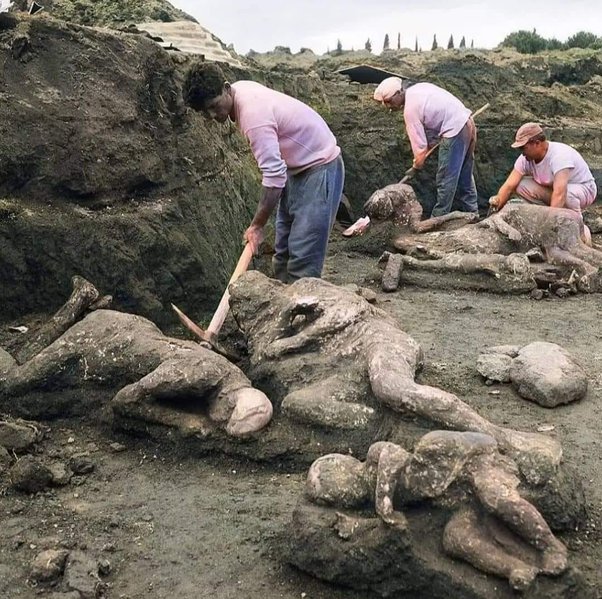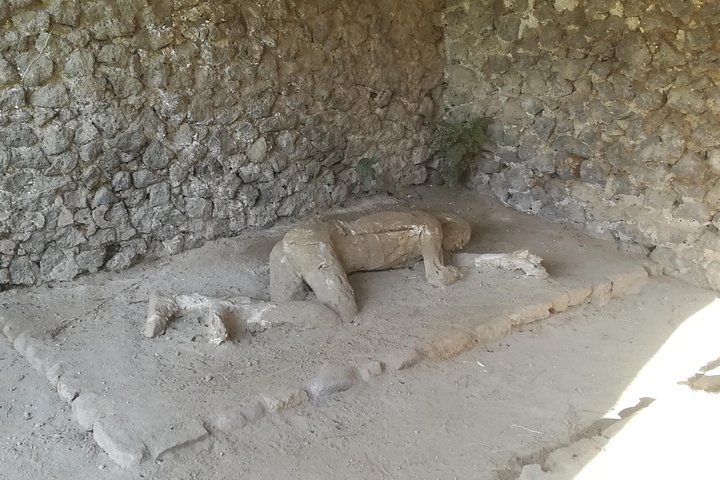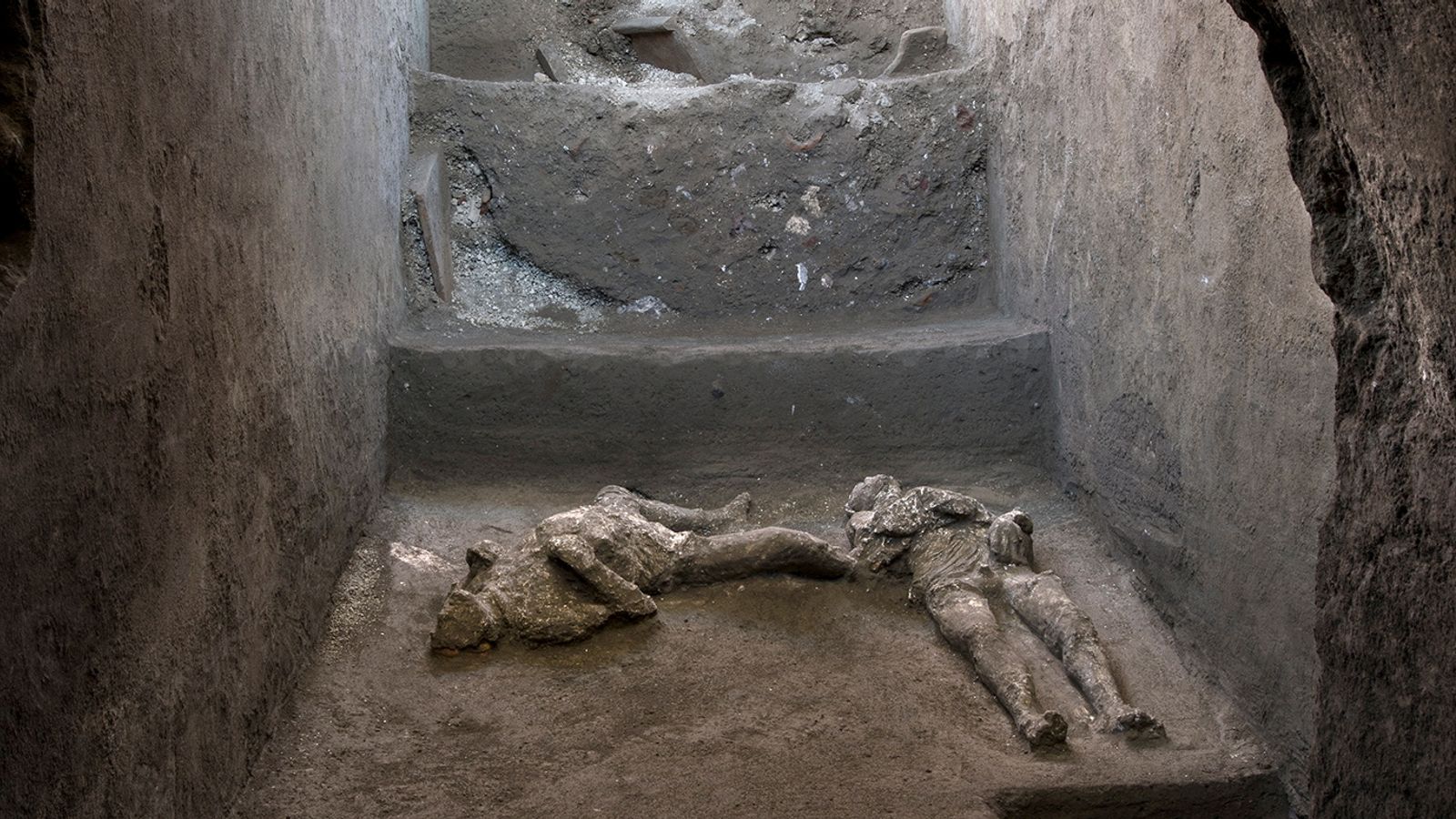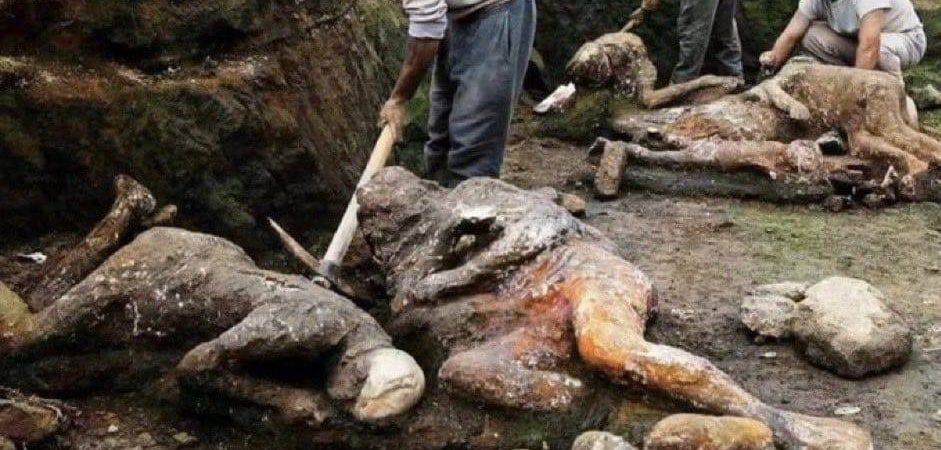Introduction
Pompeii, the once-thriving ancient Roman city, has captivated the world’s imagination for centuries. Buried under a thick layer of volcanic ash after the catastrophic eruption of Mount Vesuvius in 79 CE, this remarkably well-preserved site has offered a unique window into the lives of its inhabitants. Among the ruins, the discovery of the ancient bodies of Pompeii has been particularly haunting and enlightening, providing a poignant glimpse into the final moments of those who perished in the disaster.

In this comprehensive blog post, we will delve into the captivating stories behind the ancient bodies of Pompeii, exploring how these remarkable finds have shed light on the daily lives, final moments, and enduring legacy of the city’s inhabitants. From the heartbreaking tales of families seeking refuge to the chilling discoveries of those caught in the throes of the eruption, we will uncover the haunting secrets that these bodies have to tell.
The Eruption of Mount Vesuvius and the Destruction of Pompeii
On that fateful day in August 79 CE, the residents of Pompeii were going about their daily lives, unaware of the impending disaster that would forever change the course of their city. Around noon, Mount Vesuvius erupted, spewing a massive plume of volcanic debris that rained down on the unsuspecting city.

The initial shower of ash and pumice was followed by a series of pyroclastic flows – superheated clouds of gas and rock that swept through the streets, crushing and asphyxiating everything in their path. In a matter of hours, Pompeii was transformed from a thriving metropolis to a ghostly, entombed relic of the past.
The Rediscovery and Excavation of Pompeii
For centuries, Pompeii remained buried and forgotten, its existence only a distant memory. It wasn’t until the 18th century that the city was rediscovered, sparking a wave of archaeological interest and excavation efforts that continue to this day.

The first significant excavations began in 1748, when a team of workers uncovered the ruins of the ancient city. As the layers of ash and debris were carefully removed, the world was astonished to discover a remarkably well-preserved Greco-Roman city, frozen in time. From grand public buildings and lavish villas to humble homes and everyday objects, Pompeii offered a rare glimpse into the lives of its inhabitants.
The Haunting Discovery of the Ancient Bodies
Among the most captivating and poignant finds in Pompeii were the preserved remains of the city’s inhabitants. As the excavations progressed, archaeologists began to uncover the bodies of those who had perished in the eruption, their final moments captured in the solidified ash.

These ancient bodies, often found in various poses and expressions, have provided invaluable insights into the final moments of Pompeii’s residents. Some were discovered huddled together, suggesting they had sought refuge in the face of the impending disaster. Others were found fleeing the city, their bodies contorted in a desperate attempt to escape the deadly ash and gases.
One particularly haunting discovery was that of a family sheltering in the basement of a villa. The remains of a woman, a young child, and a dog were found, their bodies intertwined as they sought protection from the eruption. The heartbreaking scene has become one of the most iconic and poignant images of the Pompeii tragedy.
Preserving the Past: The Plaster Casts of Pompeii
As the excavations progressed, archaeologists faced a challenge in preserving the fragile remains of the ancient bodies. The volcanic ash had, in many cases, solidified around the bodies, creating a perfect mold of their final moments. To preserve these remarkable finds, the archaeologists developed a technique of pouring plaster into the molds, creating detailed casts that capture the expressions and poses of the victims.

These plaster casts have become some of the most iconic and haunting artifacts of Pompeii, allowing us to see the faces and final moments of the city’s inhabitants. The casts reveal the agony and terror experienced by those who perished, their expressions frozen in time, serving as a powerful reminder of the devastating impact of the eruption.
The Stories Behind the Ancient Bodies
Each of the ancient bodies discovered in Pompeii has a story to tell, and through careful analysis and interpretation, archaeologists have been able to piece together the lives and final moments of the city’s inhabitants.
One particularly poignant example is the remains of a young woman found in the Lupanar, or brothel, of Pompeii. The woman, believed to be a sex worker, was found with a purse of coins, suggesting she had been trying to flee the eruption. The discovery has shed light on the complex social dynamics of ancient Pompeii, challenging preconceptions about the city’s inhabitants and offering a more nuanced understanding of their lives.

Another remarkable find was the remains of a man believed to be a high-ranking official or nobleman. The body was found in a grand villa, surrounded by valuable artifacts and jewelry, indicating a life of wealth and privilege. The position of the body, with one arm raised as if in a final gesture, has led archaeologists to speculate about the individual’s final moments and the emotions they experienced as the eruption unfolded.
The Lasting Legacy of Pompeii’s Ancient Bodies
The ancient bodies of Pompeii have not only captivated the public imagination but have also proven to be invaluable resources for scholars and researchers. Through the detailed study of these remains, archaeologists have been able to gain unprecedented insights into the lives, health, and final moments of the city’s inhabitants.
For example, the analysis of bone and teeth samples has provided information about the diets, diseases, and overall health of the Pompeii residents. Additionally, the positions and conditions of the bodies have offered clues about the nature of the eruption and the specific ways in which the victims perished.
Beyond the purely academic value, the ancient bodies of Pompeii have also had a profound impact on our collective understanding of the past. The haunting and poignant nature of these discoveries has sparked the public’s imagination, inspiring countless works of art, literature, and popular culture. The ancient bodies have become symbols of the fragility of human life and the enduring power of the natural world to shape the course of history.
Conclusion
The ancient bodies of Pompeii stand as a powerful testament to the devastating impact of the eruption of Mount Vesuvius in 79 CE. These remarkable finds have not only provided invaluable insights into the lives and final moments of the city’s inhabitants but have also captured the public’s imagination, inspiring a deep fascination with the past.
As we continue to uncover and study the ancient bodies of Pompeii, we are reminded of the fragility of human existence and the enduring power of the natural world. These haunting discoveries serve as a poignant reminder of the importance of preserving our shared history and the stories it has to tell, ensuring that the legacy of Pompeii’s inhabitants lives on for generations to come.



